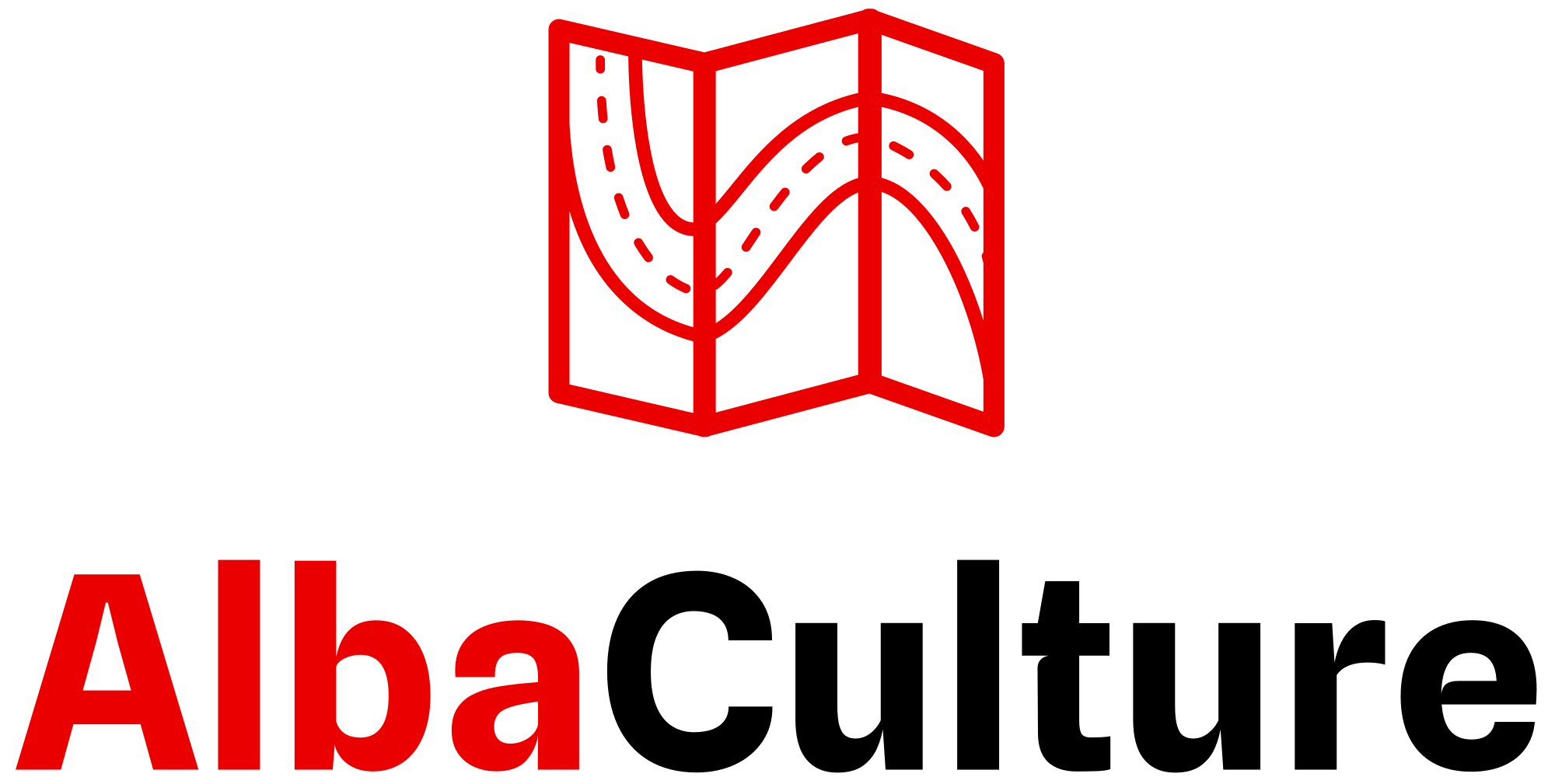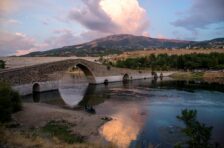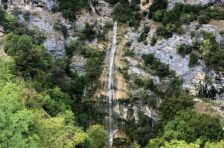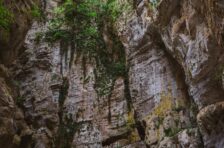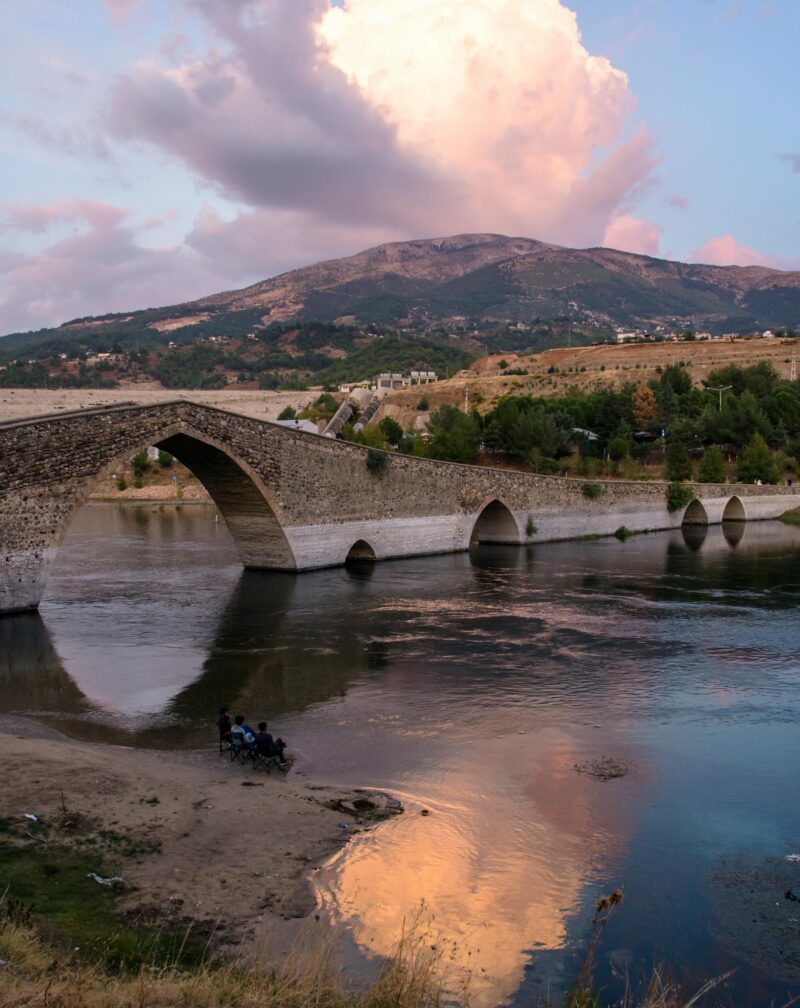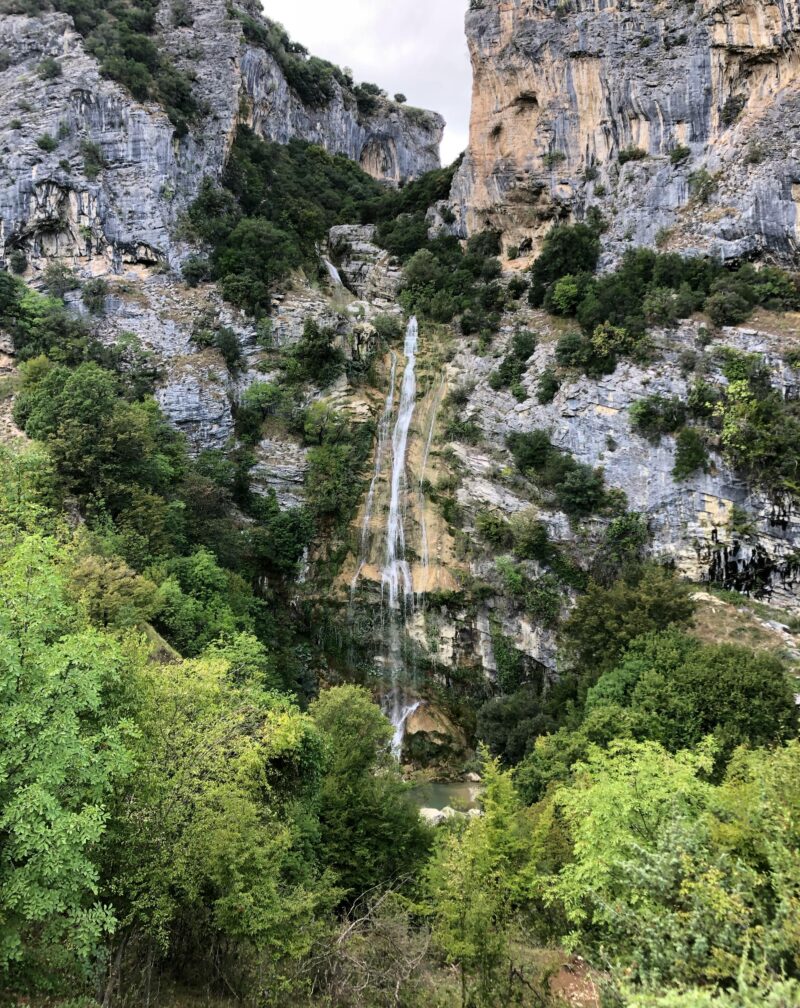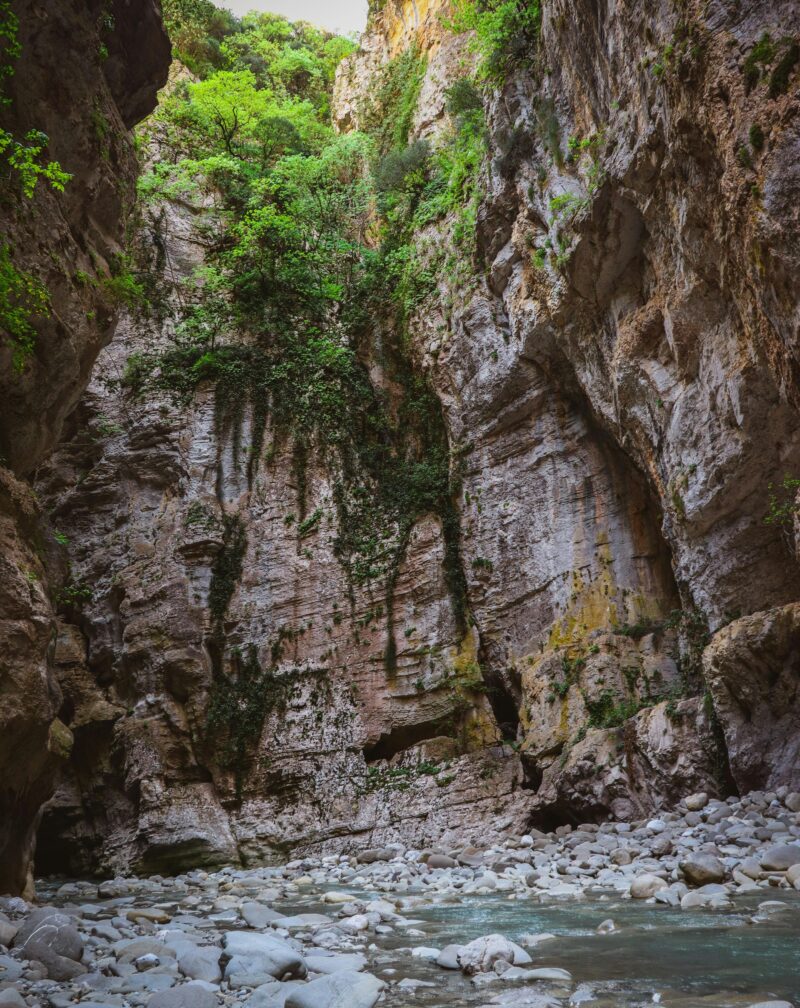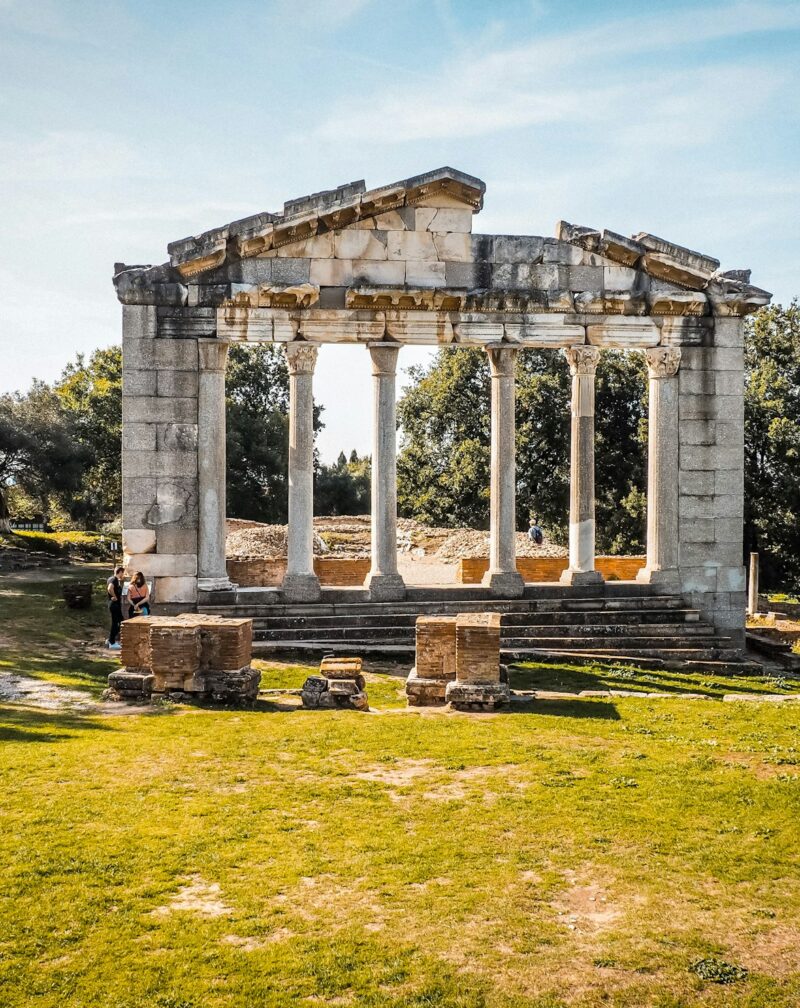Layers of Civilization by the Sea
Butrint represents what Albania offers at its best—major archaeological significance, beautiful natural setting, historical complexity spanning over 2,500 years, yet still accessible and uncrowded compared to similar sites elsewhere.
This UNESCO World Heritage Site (since 1992) preserves remains from Greek, Roman, Byzantine, and Venetian periods. It sits on a peninsula surrounded by Lake Butrint and the Vivari Channel connecting to the Ionian Sea. The combination of ruins, water, and forest creates a unique atmosphere.
History
Butrint’s origins blend myth and archaeology. Legend connects it to the Trojan War—refugees from Troy supposedly founded a settlement here. Archaeological evidence shows Illyrian settlement dating to at least 10th century BC.
Greek colonists from Corfu established city 4th century BC. It grew during the Hellenistic and Roman periods. The site remained important throughout the Byzantine era, had brief Venetian period, then declined into obscurity.
Mussolini’s archaeologists excavated extensively 1920s-30s (Albania was Italian protectorate). Work continued post-WWII and continues today, constantly revealing new structures.
The Archaeological Site
Butrint covers a significant area. Plan 2-3 hours minimum for proper exploration. The path winds through ruins chronologically and geographically.
Greek Theater Early highlight—Greek theater built into hillside facing Lake Butrint. Dating from the 3rd century BC, it seated about 2,500 spectators.
The setting is extraordinary—stone seating with lake views, forest surrounding theater, perfect natural acoustics. It’s one of Albania’s most photographed archaeological features.
The theater still hosts occasional performances, proving ancient engineering works across millennia.
Sanctuary of Asclepius Greek healing sanctuary dedicated to Asclepius (God of medicine). Only foundations survive, but inscriptions and votive offerings found here (now in museum) prove it was an important pilgrimage destination.
Ancient sick and injured came seeking healing through religious ritual. Butrint had reputation for healing similar to Epidaurus in Greece.
Roman Forum and Baths As the Romans took control, they added their structures. The forum shows public space where civic life occurred basilicas for law, temples, markets.
The bath complex is extensive caldarium (hot room), tepidarium (warm room), frigidarium (cold room), hypocaust heating system still visible. Roman obsession with bathing infrastructure is evident.
The baths continued functioning into the Byzantine period with modifications.
Baptistery 6th-century Byzantine baptistery is Butrint’s treasure. The floor mosaic is stunning—geometric patterns, animal representations, Christian symbolism, all remarkably preserved.
The baptismal font sits in the center of the mosaic-decorated floor. The circular design represents cosmic symbolism—baptism as spiritual rebirth, entry into Christian community.
The mosaics use small tesserae (tiles) creating detailed images despite being 1,500 years old. Conservation efforts keep them protected but visible.
This is one of Albania’s finest early Christian monuments.
Great Basilica Large Byzantine church with impressive floor plan still traceable. Multiple construction phases show how buildings were modified across centuries.
Additional mosaics, though less preserved than baptistery, show geometric and figural designs. Column bases and capitals scattered around indicate original grandeur.
Venetian Castle/Fortress At the site’s highest point, Venetian triangular fortress (14th-15th century) overlooks everything. Walls are well-preserved, providing views over lake, channel, and archaeological zone.
The fortress marks Butrint’s final significant building phase. After Venetians left, the site gradually abandoned.
You can walk the walls. The views alone justify the climb—lake, ruins below, mountains beyond, channel connecting to sea.
Museum Small on-site museum displays find from excavations:
- Sculptures from various periods
- Pottery and everyday objects
- Inscriptions and carved stones
- Architectural elements
- Coins showing trade connections
- Scale models of how site looked different eras
The museum helps connect scattered ruins into coherent historical narrative.
The Natural Setting
Butrint’s environment is integral to its appeal. The site sits within Butrint National Park—protected area including lake, wetlands, forests, and coast.
Lake Butrint surrounds the site on three sides. It’s technically a lagoon, connected to the sea by a narrow channel. The water is brackish—mix of fresh and salt water—creating a unique ecosystem.
Wildlife is abundant. Over 200 bird species were recorded—herons, cormorants, eagles, countless waterbirds. Spring and fall migrations bring additional species. Birdwatchers love Butrint.
The forest covering much of the site isn’t a manicured park. It’s Mediterranean oak forest with undergrowth, wildlife, and natural character. Ruins emerge from vegetation rather than sitting on cleared, groomed grounds.
This naturalistic presentation is controversial among archaeologists—vegetation damages stones—but creates atmospheric experience for visitors.
The Vivari Channel
Narrow waterway connecting lake to sea, lined with mussels’ farms. Local families cultivate mussels using traditional methods. The channel is beautiful—calm water, mountains reflected, boats passing.
Walking along channel provides different perspective on Butrint—seeing it from water level, understanding its strategic maritime position.
Practical Information
Getting There:
- From Saranda: 25 minutes (15km) south
- From Ksamil: 10 minutes north
- Buses and furgons run regularly from Saranda
- Taxis available (negotiate price beforehand)
- Organized tours from Saranda include transport
Entry: Around 1,000 lek for foreigners, less for Albanians. Tickets include a site and museum.
Opening Hours: Daily, typically 8 AM-7 PM summer (shorter winter hours).
Time Needed: Minimum 2 hours for main structures. 3-4 hours for thorough exploration including museum, walks, and absorption time.
Facilities: Small cafe near entrance. Bathrooms available. No restaurant on site—bring snacks/lunch or plan to eat in nearby Ksamil or Saranda.
Best Time: Spring (April-May) and autumn (September-October) ideal—comfortable temperatures, good light, fewer crowds. Summer is hot—go early or late. Winter is quiet and mild but shorter days limit time.
Guides: Available at entrance, typically 2,000-3,000 lek for group. Highly recommended site is complex, easy to miss details, explanations add enormously to experience.
What to Bring:
- Water (plenty—site is large, hot in summer)
- Sun protection (hat, sunscreen, sunglasses)
- Good walking shoes (uneven ground, some stairs)
- Camera
- Binoculars if interested in birdwatching
Combining Visits
Butrint pairs naturally with:
- Ksamil beaches (5 minutes away) – swim before/after archaeology
- Blue Eye (30 minutes) – natural spring
- Saranda (25 minutes) – base for accommodations and dining
Many visitors do Butrint morning, beach afternoon. Or reverse—beach morning when crowds are light, Butrint afternoon when it’s cooler.
The Butrint Significance
Butrint matters for multiple reasons:
Archaeological: It shows continuous human occupation across 2,500+ years. Greek, Roman, Byzantine, Venetian layers are all visible and identifiable. Few sites demonstrate such clear civilizational succession.
Educational: Understanding how societies built upon each other’s work—reusing stones, adapting buildings, creating palimpsest of human presence—is tangible here.
Natural: The integration of ruins with wild landscape creates experience unlike heavily manicured archaeological parks. Butrint feels alive rather than frozen in time.
Preservation: UNESCO status ensures protection and ongoing research. Work continues—new discoveries happen regularly, adding to our understanding.
Accessibility: Major ancient site without overwhelming crowds (except occasional tour groups). You can explore at your own pace, sit among ruins, absorb the atmosphere without being rushed.
The Literary Connection
French dramatist Racine referenced Butrint (as Buthrotum) in his tragedy “Andromaque” (1667). For European literature students, there’s connection to classical education and mythological tradition.
The “Lion Gate” mentioned in classical texts is hidden in vegetation, reportedly still standing if you can find it with guide’s help.
Albanian National Pride
Butrint represents Albania’s ancient heritage, proof that this land was significant in classical Mediterranean world. For Albanians navigating national identity, having UNESCO World Heritage Site of Butrint’s caliber matters deeply.
The government invested in site protection, infrastructure, and presentation. It’s Albania showcasing its best to the world.
The Experience
Walking Butrint, you experience history as layers—literally walking through Greek theater, past Roman columns, around Byzantine baptistery, up to Venetian castle, all while surrounded by nature that’s reclaiming everything.
The lake views, forest sounds, bird calls, water lapping shores—these aren’t background noise but integral parts. Ancient people chose this location for strategic and beautiful reasons. Those reasons remain evident.
Unlike some archaeological sites that feel dead—preserved but lifeless—Butrint feels inhabited by time itself. The ruins breathe with centuries.
It’s not Pompeii’s drama or Athens’ grandeur. It’s quieter, smaller scale, more intimate. But that intimacy allows connection. You’re not overwhelmed by monumentality—you’re walking where people walked, seeing what remains of their lives, imagining their world.
For many visitors, Butrint exceeds expectations. Photos don’t capture the atmosphere—how light filters through trees, how theater frames lake views, how mosaics gleam under protective covers, how fortress walls stand against sky.
It’s Albania’s archaeological crown jewel, and deservedly so. If you visit Albania and skip Butrint, you’ve missed something essential.



